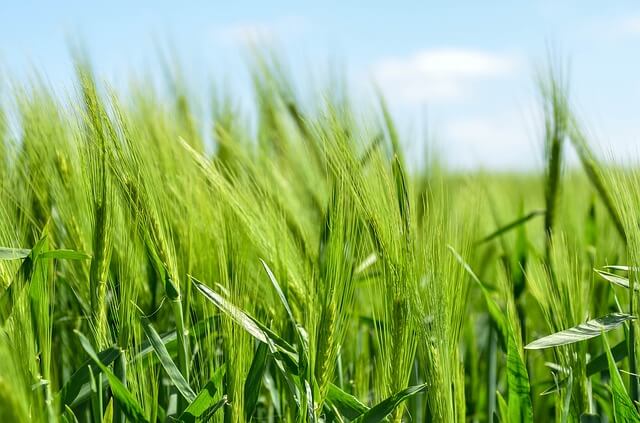The agricultural sector contributes only 14% to our GDP, but still it important because of its unique roles as below. Agriculture & poverty are very well related. The permanent solution to rural poverty is agricultural growth. Even urban poverty is linked to agriculture urban poverty is the outgrowth of rural poverty as they are the rural migrants as agriculture couldn’t absorb all of them. So poverty can’t be taken care of without a focus on agriculture.
About 60% populations are directly dependent on agriculture. Linkage of agriculture with industrial growth. In industrial growth, we talk about supply-side growth like technology, FDI, ease of doing business, better tax policy, etc. But also industrial growth depends on demand not purchased industrial growth, which will not take place. The 60% of people depending on agriculture are the biggest demand side of industrial products. Food security is essential for sustained growth, not possible without agriculture.
Ways to increase agricultural growth
Agricultural growth can come through 2 channels. The increasing area under agriculture is possible only through better irrigation facet. But slowly it is reaching its saturation, because of the high demand for land even in the industrial sector. The entire focus should move towards this and India has so much potential to increase productivity. So this is the focal point of our agriculture-related policies.
Crops & Cropping Pattern
India is an agriculturally important country. 2/3rd of its population is engaged in agricultural activities. Agriculture is a primary activity, which produces most of the food that we consume. Besides food grains, it also produces raw materials for various industries. Moreover, some agricultural products like tea, coffee, spices, etc. are also exported.
Types of Farming
Agriculture is an age-old economic activity in our country over these years, cultivation methods have changed significantly depending on the characteristics of the physical environment, technological know-how, and socio-cultural practices. Farming varies from subsistence to commercial type. At present, in different parts of India, the following farming systems are practiced-
Primitive subsistence farming
This type of farming is still practiced in a few pockets of India. Primitive subsistence agriculture is practiced on small patches of land with the help of primitive tools like hoe, dao and digging sticks, and family/community labor. This type of farming depends upon monsoon, natural fertility of the soil, and suitability of other environmental conditions to the crops grown.
It is a slash and burns agriculture. Farmers clear a patch of land and produce cereals and other food crops to sustain their families. When the soil fertility decreases, the farmers shift and clear a fresh patch of land for cultivation. This type of shifting allows nature to replenish the fertility of the soil through natural processes, had productivity in this type of agriculture is low as the farmer does not use fertilizers or other modern inputs. It is known by a different name in different parts of the country.
Jhumming
The ‘slash and burn agriculture is known as ‘milpa’ in Mexico and Central America, ‘Concuo’ in Venezuela. In India, this primitive form of cultivation is called ‘Bewar’ or ‘Dahiya’ in Madhya Pradesh, ‘Podu’ or ‘Penda’ in Andhra Pradesh, ‘PamaDabi’ or ‘Koman’ or ‘Bringa’ in Orissa, ‘Kumari’ in the Western Ghats, ‘Valre’ or ‘Waltre’ in South-eastern Rajasthan, ‘Khil’ in the Himalayan belt, ‘Kuruwa’ in Jharkhand, and ‘Jhumming’ in the North-eastern region.
Intensive subsistence farming
This type of farming is practiced in areas of high population pressure on land. It is labor-intensive farming, where high doses of biochemical inputs and irrigation are used for obtaining higher production.
Though the ‘right of inheritance’ leading to the division of land among successive generations has rendered land-holding size uneconomical, the farmers continue to take the maximum output from the limited land in the absence of alternative sources of livelihood. Thus, there is enormous pressure on agricultural land.
Commercial farming
The main characteristic of this type of farming is the use of higher doses of modern inputs, e.g. high yielding variety (HYV) sees chemical fertilizers, insecticides, and pesticides in order to obtain higher productivity. The degree of commercialization of agriculture varies from one region to another. For example, rice if a commercial crop in Haryana and Punjab but in Orissa, it is a subsistence crop. The plantation is also a type of commercial farming.
In this type of farming, a single crop is grown in a large area. The plantation has an interface between agriculture and industry. Plantations cover large tracts of land, using capital-intensive inputs, with the help of migrant laborers. All the produce is used as raw material in respective industries.
In India, tea, coffee, rubber, sugarcane, banana, etc. are important plantation crops. Tea in Assam and North Bengal coffee in Karnataka are some of the important plantation crops grown in these states. Since the production is mainly for the market, a well-developed network of transport and communication connecting the plantation areas, processing industries, and markets play an important role in the development of plantations.

